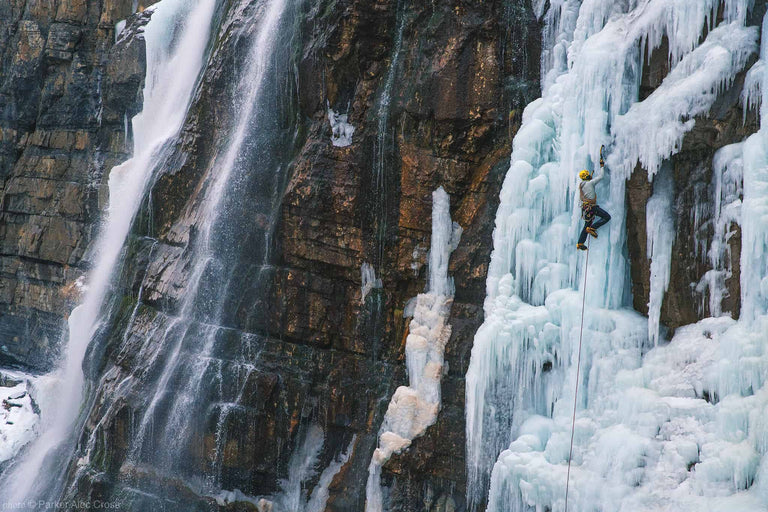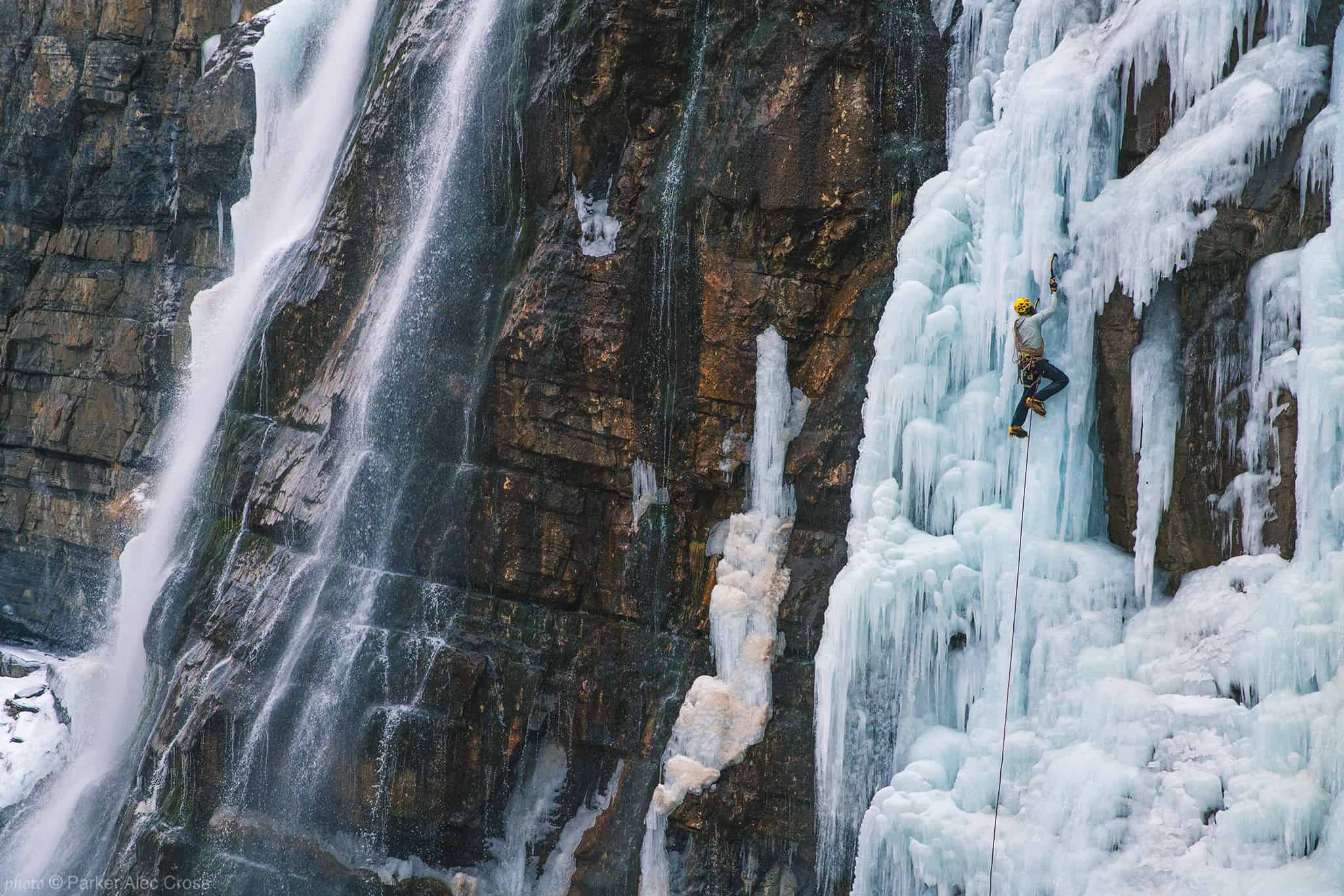If you’ve ever attempted a tough workout while dehydrated, you know that feeling: wondering why your body just will not do what it usually can quite easily, and why you got winded walking up the stairs. Headaches, muscle cramping and a foggy brain can all be caused by a lack of hydration. But water can be so much more than just fuel for hydration.
Being in and around water can be refreshing and invigorating, both mentally and emotionally. Soaking in a warm bath on a cold winter night, swimming laps in the pool or watching the sunset on a tropical beach, water can have a profound impact on how we fuel our bodies and minds.
The Strength of Liquid Fuel
Gnarly athlete and strength coach Joslynn Corredor grew up a mile away from the sunny beaches of Southern California, but during most of that time she was more intimidated by the power of the ocean than excited about swimming in it. Eventually that changed as she got into surfing. Jos’ experiences with surfing in the ocean still contain elements of caution and an acute awareness of how powerful the current and waves can be.
“Mentally being in the water is comparable to being in the mountains, in the way that you have no control,” Jos said. “Depending on how strong the ocean is that day, you could be fighting against it, or it could be a nice light day where you feel like you’re swimming through a pool.”
Jos was on the track team at Oregon State University where some of her teammates turned to pool workouts to rehab injuries. With less resistance in the water, pool workouts are often the key to recovering and helping to gain back lost muscle.
A 2019 analysis looked into the effects of hydrotherapy after ACL reconstruction surgery. The paper studied whether exercising in water could speed up recovery, aiding in mobility and strengthening. “The main advantage of aquatic therapy in the functional recovery process is that activities or exercises can be introduced earlier in the functional recovery process than on land, potentially accelerating the recovery process and reducing the overall recovery time.”
This helps explain some of the properties water has that can aid in recovery and helped out Jos’ teammates. She said some who were nursing an injury never did land workouts, but come race day they performed just as well as the team members who trained on land.
The Intangible Fuel
Gnarly athlete Kelly Halpin often heads out on summer adventures near her home in Jackson, Wyoming. With steep ridgeline adventures in the Tetons, one of Kelly’s favorite post-physical endeavor activities is jumping in the nearby alpine lakes and streams.
“It's really wonderful and refreshing and invigorating,” Kelly said. “It's a juxtaposition: you’re hot, dry, sweaty and then you're just in this whole other world of cool water. It’s just incredible.”
Occasionally Kelly’s experiences in water err on the side of eerie, rather than refreshing. One of her (epic!) repeated adventures, The Picnic, calls for an alpine lake 1.3-mile swim (after biking 21 miles), followed by an up-and-down of the entire Grand Teton, then repeat. Both the 1.3-mile swim to the mountain and the 1.3-swim back take place in the dark.
“It’s this whole other trippy world, especially with the longer Picnics that’s a super endurance event,” Kelly said. “There’s a kind of hallucinating when you’re swimming back. Sometimes it’s early morning when you start out coming across the lake and sometimes it’s the middle of the night. It’s so strange.”
Gnarly athlete and wellness coach Piseth Sam also feels that being in water is an intangible fuel. “It’s transformative,” she said. “The ocean is the closest thing we get to being back in the womb – the salty water, floating on your back, being suspended. I love my bath tub for this reason. Whenever I head to the ocean, there’s an immediate feeling of being connected and present — being on the water helps me recenter when so much of my time is spent on the screen.”
Piseth swims, kayaks and is often exploring the coastline on her stand-up-paddleboard. Some of Piseth’s most joyful childhood memories involve water — field trips to lakes or pools, or when her mom took her swimming. “As an adult, I didn’t practice swimming and wasn’t good at it, so I made an active choice to get better,” Piseth said. “In some ways, it was a survival thing. I think we need to be able to navigate all the elements of this earth.”
It’s fun to play in … But what about hydration?
It’s easy to assume every professional athlete or coach has hydration figured out. Recognizing the importance, afterall, is a huge step in the process of making sure we’re drinking enough. And professional athletes and coaches know this best — the body doesn’t do well if it’s dehydrated.
All those interviewed for this article individually said that staying on top of hydration is no easy task. And all of them said they use some sort of water bottle to help track how much liquid they’ve consumed and how much more they need to drink in order to maintain ideal hydration each day.
Piseth has a way to make sure she’s drinking enough but not dedicating too much thought to it. “Having a designated water container with ounces/cup measurements really helps me stay on top of my water consumption,” Piseth said. “I fill up the bottle completely and don’t fill it up again until I’ve finished it (each day I try to get in at least 2-3 bottles, about 8-12 cups). This helps me ensure I’m getting enough water, without thinking obsessively about it.”
Jos has a similar approach and uses a water bottle with ounce indicators, and not refilling it until she’s drunk it all so it’s easy to track. Kelly does the same, but with a one-gallon jug.
Jos also mentioned several other important factors for staying on top of water intake. “If you’re super dehydrated, your brain can confuse that with hunger,” Jos said. “If you don’t have enough water it can make you feel almost the same as when you don’t get enough sleep. It can also affect your muscles. If you don’t have enough water, you’re actually gonna end up a lot more sore.”
The Ultimate Fuel
Water is the foundation for everything we do in life. A high percentage of water makes up our brains, hearts, lungs and skin – all organs that play a major role in our athletic performance. It’s safe to say water is an essential fuel source; without water, we’re goners. Other than physical needs, water may be the exact fuel we crave mentally and emotionally. You know what I’m talking about if you’ve ever taken a warm epsom-salt bath for tired muscles.
When we talk about fueling, we have to give credit to water as an essential and often overlooked element that fuels so much of our lives. Plus, we need it for replenishment after that post-send beer. 😉
Works Cited
- Buckthorpe, Matthew et al. “BENEFITS AND USE OF AQUATIC THERAPY DURING REHABILITATION AFTER ACL RECONSTRUCTION -A CLINICAL COMMENTARY.” International journal of sports physical therapy vol. 14,6 (2019): 978-993.






